The ocean once presented a challenge to human exploration. For centuries the worlds underwater were impenetrable lands and we could only dream of what fantastic worlds lay at its bottom. Atlantis, perhaps, or the grand palaces of mer-people. But today we have the pleasure and privilege of traveling the undersea world with ease, witnessing its biodiversity and breathtaking seascapes. So why not take a trip to the world’s many wonders under the waves?

Chasing the best diving locations in the world may bring us to far-flung and unexpected places. Traversing the Pacific for Micronesia, flying east of the Philippines and north of New Guinea, we arrive at the Republic of Palau, a small island nation that has designated almost all of its total ocean territory fully protected marine reserve, the first such move for any nation. Extraordinarily healthy coral reefs are the result––a true feast for the eyes of brilliant colors and textures, anemones, giant clams, and more, with over 400 diverse coral species create stunning underwater vistas. Thanks to Palau’s marine protection efforts, these coral reefs teem with over 1300 species of fish. And with most of Palau’s snorkling sites positioned among its 300 limestone islands, you can expect superb diving conditions with calm, clear waters and balmy temperatures.

Further east you can visit with komodo dragons and dive at several of the world’s greatest diving sites within Komodo National Park, designated a UNESCO World Heritage site in 1991. Komodo Island part of the great Coral Triangle encompassing Indonesia, Malaysia, the Philippines, Papua New Guinea, the Solon Islands and Timor Leste, containing the highest diversity of coral reef species in the world. Each year its dive spots attract throngs of undersea photographers hoping to catch snapshots of pygmy seahorses, blue-ribbon eel, sea turtles, Leaf scorpionfish, and other dazzling tropical species. Equally worthy of a snapshot are the beaches surrounding Komodo Island’s famous reefs, like Pantai Merah aka Pink Beach, and Batu Balong with its famous Batu Balong Hindu temple perched atop its iconic rock ridge.
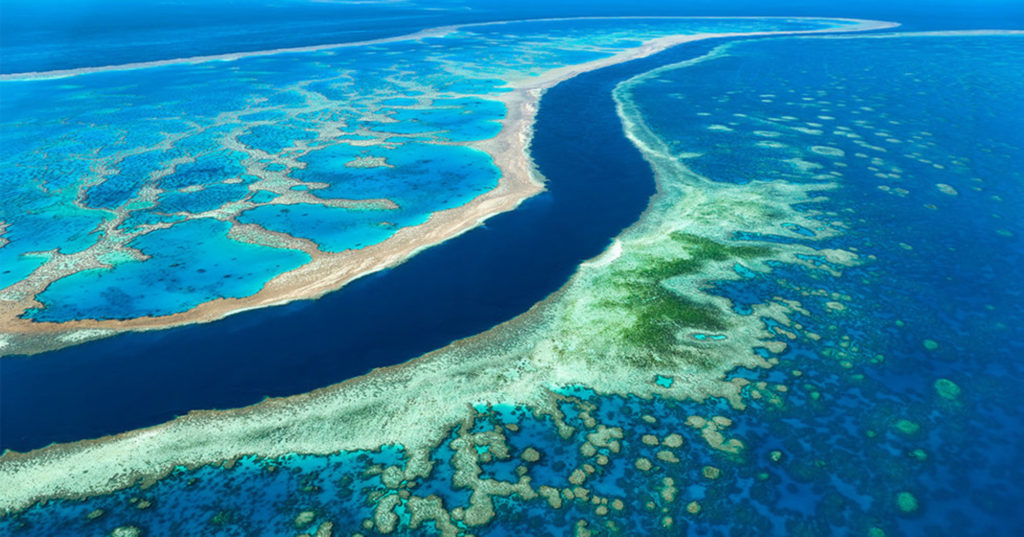 An aerial view of the Great Barrier Reef
An aerial view of the Great Barrier ReefAnother UNESCO World Heritage site off the eastern coast of Queensland, Australia, we come to the world’s largest and most famous coral reef, the Great Barrier Reef. Considered Australia’s greatest natural wonder, the Great Barrier Reef was ranked No. 1 Best Place to Visit in the World in U.S. News & World Report’s World’s Best Places to Visit for 2016-17. And fun fact: the Great Barrier Reef is the world’s largest living organism, stretching 1,430 miles and multiple islands, with over 3,000 individual reef systems, home to thousands of fish species including some of the world’s most endangered sea life. Whale-watching, glass-bottom boat tours, dolphin swims, beautiful golden beaches, and of course undersea diving have made tourism one of Australia’s number-one industries. However, the Great Barrier Reef’s huge popularity as a tourist attraction and snorkeling hotspot, in addition to rising ocean temperatures attributed to climate change, have compromised its health and safety. But as the world’s greatest undersea treasure, ecologists are have made huge efforts to maintain the health of its ecosystem and reserve widespread coral bleaching. Recent resurgences in reef health are a hopeful sign that its breathtaking beauty will always be cherished.
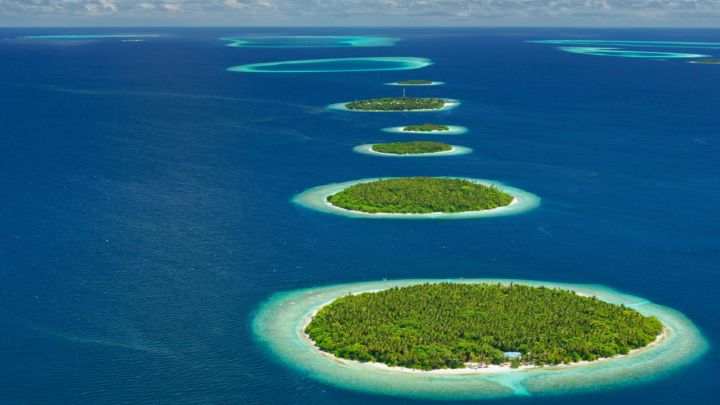
Flying across Asia we land in the Maldives, a tropical nation consisting of 2,000 coral islands. The Maldives is known for its luxurious ocean resorts, over-water villas, and picturesque sugar-white beaches, but also its exotic sea life. Under its beautiful blue waters, the Maldives’ top attractions are diving with two of the most magnificent and rare sea giants: hammerhead sharks and whale sharks. Hanifaru Bay, the crown jewel of the Baa Atoll Unesco World Biosphere Reserve, is also the main feeding and breeding ground for majestic manta rays, making them highly populous here. Certain nights of the year, the Baa Atoll beaches light up with bioluminescent photoplankton, turning the dark ocean into a surreal starry sky. The Maldives’s reefs are highly prized and protected by local marine life specialists like Manta Life monitor boats, who ensure these unforgettable encounters continue.

We cross the globe over to Central America, and as you near Belize you see out of the plane window a massive blue ribbon following the coast: the Belize Barrier Reef System. You might also have seen photos of another famous dive spot, the Great Blue Hole, a huge underwater sinkhole off the coast of Belize measuring half a mile wide and over 400 feet deep. It sits as a world-class diving location for the chance to descend its 400-foot depth in crystal-clear waters. The main attraction of the Great Blue Hole isn’t just its marine life, but the soaring columns of stalagmites, like a great limestone undersea cathedral, and its mysterious caverns formed over eons of water and glacial movement. Each level down the Hole brings a different panorama, from nurse sharks and squirrel fish poking out of the deep sea caves, to barracudas, turtles, and other reef dwellers closer to the surface. Outside the Great Blue Hole, manatee reserves and mangrove-lined dive spots change the composition of Belize’s waters in color and marine species. As another UNESCO treasure, Belize has made great strides to protect the Reef System, including legislative bans of oil drilling around the reef and protected areas, and frequent reef health assessments issued by the Healthy Reef for Healthy People Initiative.
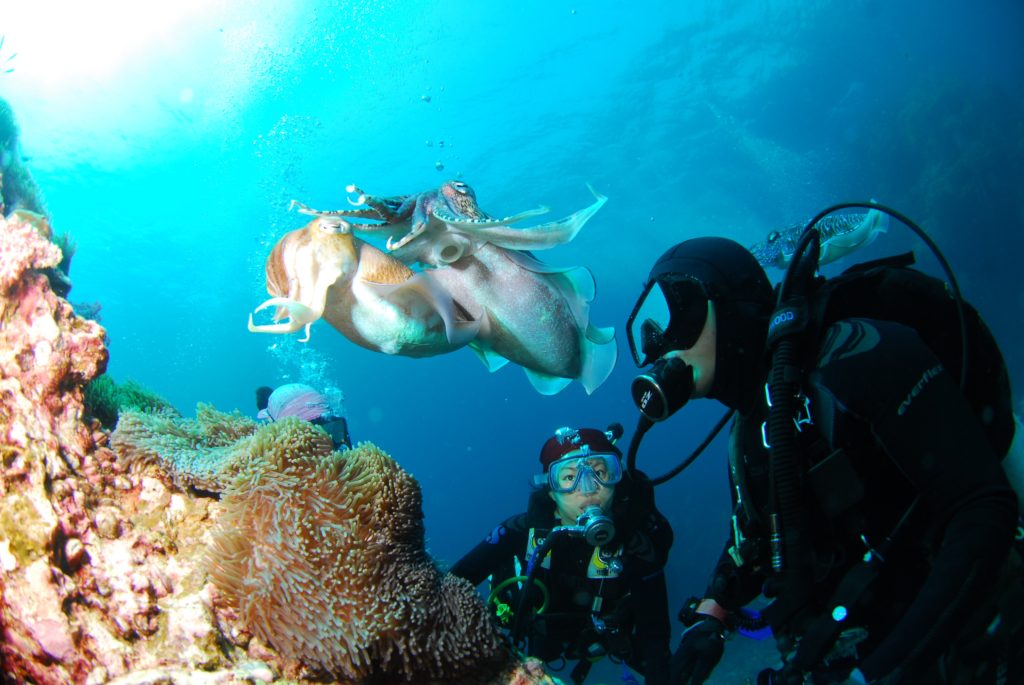
Finally, we head south off the coast of Ecuador for our final stop: the Galapagos Islands, the famed center of biodiversity chosen by Charles Darwin for his evolution studies. The Galapagos National Park Administration monitors the Galapagos Marine Reserve’s 2,900 marine species, which include a surprising number of warm-blooded sea creatures: sea lions, orcas, humpback whales, penguins, and fur seals. The Islands’ location on the equator and nutrient-rich waters have enabled it to sustain a range of underwater habitats for exploring, like wetlands, lagoons, reefs, and undersea cliffs, making it a true “melting pot” of aquatic species. As a particularly intrepid diver you might explore spots like Shark Point, home to–well, I think you can guess–and Devil’s Crown, a famous sunken undersea volcano teeming with brilliantly-colored tropical fish. Diving at the Galapagos Islands can be done year-round, and you’re sure to come away with breathtaking encounters and stories to tell.
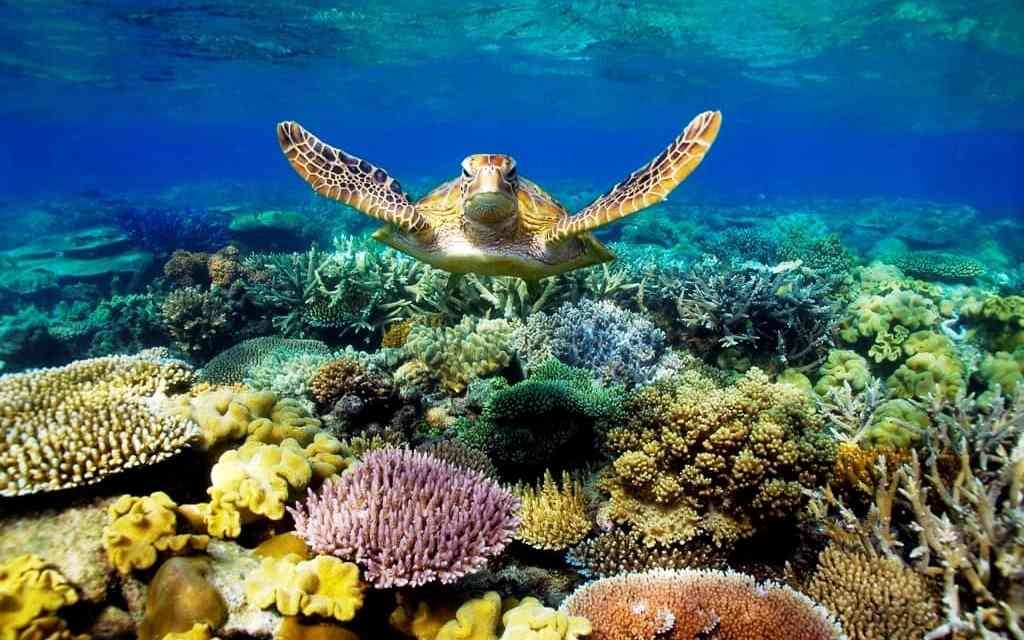
Traveling to these exotic locales, part of the thrill is meeting the locals: your local sea creatures, of course! By now you’ve acquired exhilarating undersea experiences to last a lifetime. But great ecological efforts have been made in recent years to ensure the world’s most coveted diver’s experiences last far beyond a lifetime. Diving the most beautiful coral reefs in the world reveals a whole undersea realm typically outside our field of vision, but equally worth protecting. How does the old saying go? Indeed, Great Barrier Reefs require great responsibility.
-

Freediver swimming amongst the non poisonous jelly fish of Jelly Fish Lake in Palau. -

A diver swims by coral shelves of the Great Barrier Reef. -
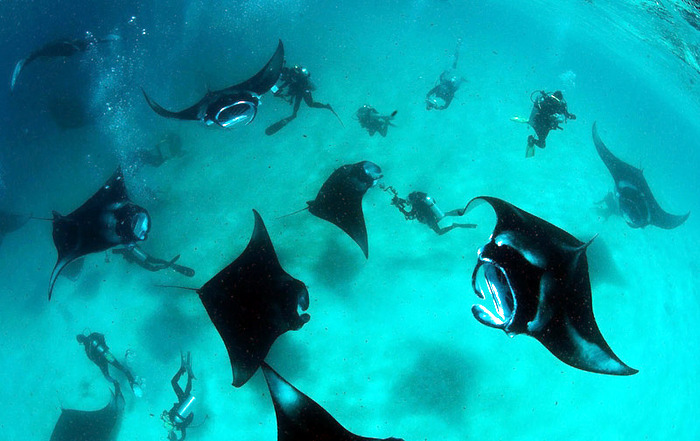
A close encounter with curious and graceful manta rays in Hanifaru Bay, Maldives. -

A Mandarin fish spotting in Palau. -

Divers come upon a group of cuttlefish, common in the oceans of the Galapagos Islands. -
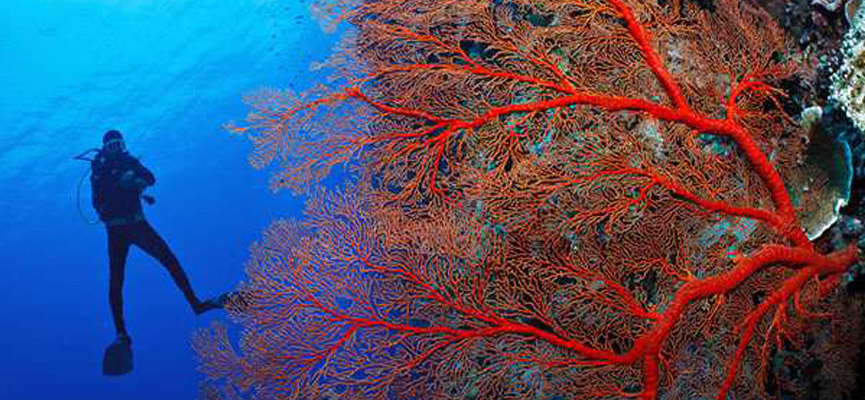
Perjuangan boats have brought this diver to the best undersea locations of Komodo Island. -

A snorkeler comes close to a whale shark, the largest fish species known to man, in the Maldives. -

Sting rays at the Hol Chan Marine Reserve of Belize.









